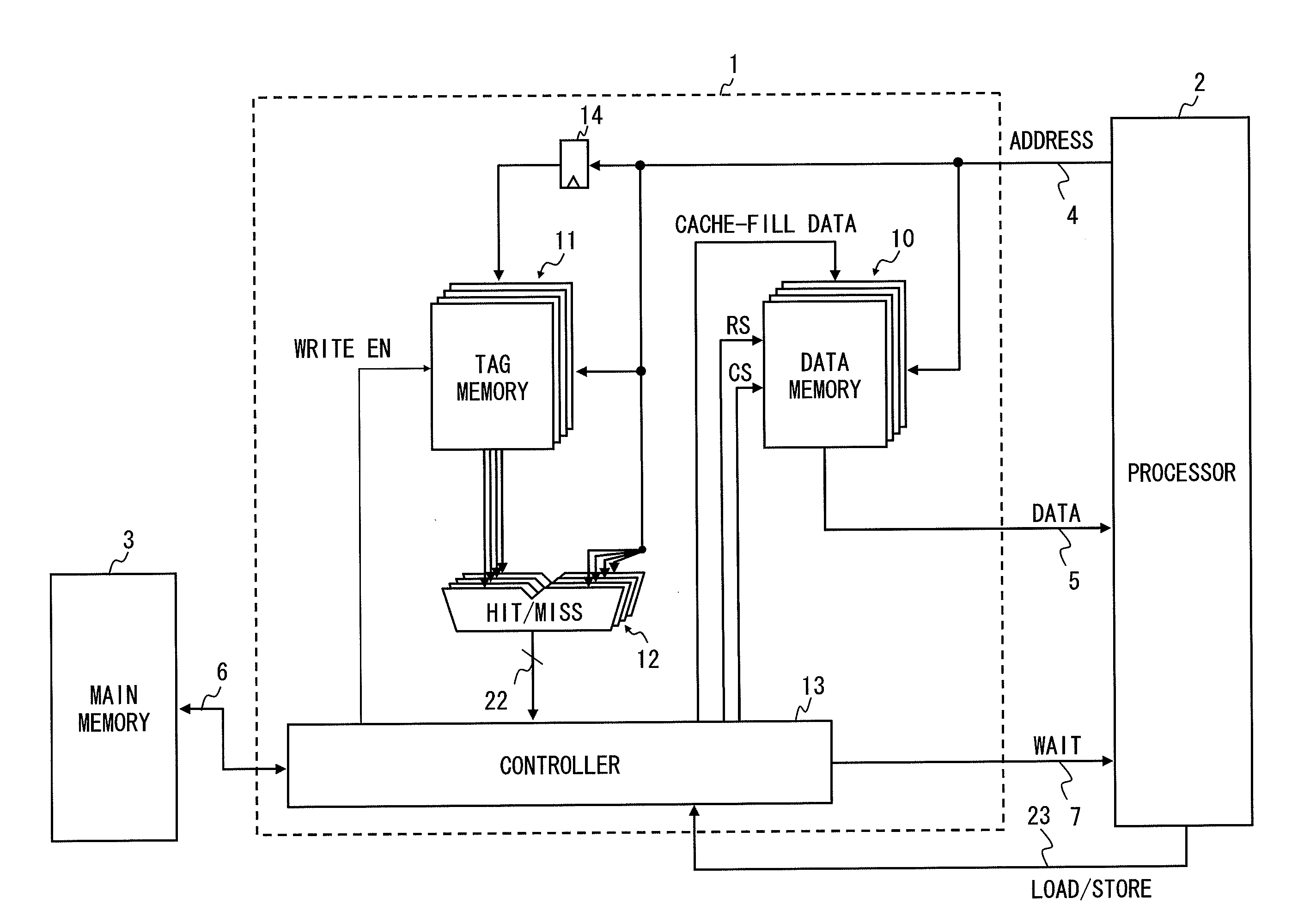Cache memory and method of controlling the same
- Summary
- Abstract
- Description
- Claims
- Application Information
AI Technical Summary
Benefits of technology
Problems solved by technology
Method used
Image
Examples
first exemplary embodiment
[0039]FIG. 1 is a configuration diagram of a cache memory according to the first exemplary embodiment of the present invention. A cache memory 1 according to the first exemplary embodiment of the present invention is a four-way set associative type cache memory. We assume that the cache memory here is the four-way set associative configuration so that the cache memory 1 and a cache memory 8 of a prior art shown in FIG. 8 are easily compared. However, such a configuration is merely one example. The number of ways of the cache memory 1 may be other than four or the cache memory 1 may be a direct-map type cache memory.
[0040]The components of a data memory 10, a tag memory 11, a hit decision unit 12, and a data latch 14, all of which being included in the cache memory 1, is the same as the components shown in FIG. 8. Therefore, the same components are denoted by the same reference symbols and detailed description will be omitted here.
[0041]The cache memory 1 is arranged between a proces...
second exemplary embodiment
[0059]A cache memory according to the second exemplary embodiment of the present invention is obtained by improving the patent document 2 by applying the present invention to the patent document 2. FIG. 4 is a configuration diagram of a cache memory 1a according to the second exemplary embodiment of the present invention. Although the cache memory 1a according to the second exemplary embodiment of the present invention has a four-way set associative configuration, it is not limited to this example as is similar to the first exemplary embodiment of the present invention. Further, the components shown in FIG. 4 which are disclosed in the patent document 2 or which are similar to those shown in FIG. 1 are denoted by the same reference symbols, and the detailed description thereof will be omitted.
[0060]In FIG. 4, there is added the control signal line 23 which is similar to that in FIG. 1 according to the first exemplary embodiment of the present invention compared with FIG. 11.
[0061]Fu...
PUM
 Login to View More
Login to View More Abstract
Description
Claims
Application Information
 Login to View More
Login to View More - R&D
- Intellectual Property
- Life Sciences
- Materials
- Tech Scout
- Unparalleled Data Quality
- Higher Quality Content
- 60% Fewer Hallucinations
Browse by: Latest US Patents, China's latest patents, Technical Efficacy Thesaurus, Application Domain, Technology Topic, Popular Technical Reports.
© 2025 PatSnap. All rights reserved.Legal|Privacy policy|Modern Slavery Act Transparency Statement|Sitemap|About US| Contact US: help@patsnap.com



